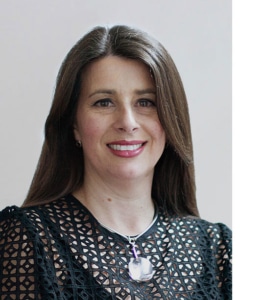Key trends from Design Inn 2022

In her role as Development Manager, Mary Traitsis combines her experience as an architect with a broad perspective of the industry. Mary recently attended the 2022 Design Inn Symposium in Adelaide, where Australasia’s hotel and hospitality design community came together to share the latest trends, challenge norms and shape future directions. Designers, architects, specifiers, consultants, hotel owners and asset managers participated in discussions around hotel trends and design & development. Here are some of the key trends Mary observed.
SUSTAINABILITY IN DESIGN
Environmental, Social and Governance (ESG) considerations were key discussion items during Design Inn. It is worth noting that the same issues were prominent on the agenda of the Australian Hotel Industry Conference and Exhibition (AHICE) that followed this event. The Green Building Council highlighted that the hotel asset class is around ten years behind other asset classes and steps are finally being taken by the industry to address this issue.
Architects and Interior Designers acknowledged that they should be specifying and offering sustainable options, from material selection, responding to local weather patterns through building design and incorporating openable windows for natural ventilation. Wider use of low VOC’s, deletion of gas, net zero concrete, net zero steel and digital power options are being explored for their ESG impacts. The industry is also being encouraged to consider the impact of the long haul transportation of materials and products on the carbon footprint of their projects. Accordingly there is renewed interest in sourcing local suppliers and supporting Australian made.
“Being sustainable needs to be at the forefront, from planning to build and opening.”
THE GUEST EXPERIENCE
There is a general desire amongst hotel operators to work with developers and designers to craft a compelling story which allows guests to truly connect to the hotel. They believe that guests are interested in this design story and hotel staff should be able to convey this. The experience is more than just the visual component of a building, scents and sounds can be implemented to strengthen the guest’s relationship to the hotel brand.
Many designers are committed to building the story from the outset where the narrative is woven through all touch points inclusive of products, objects and installations by local artisans and artists.
WELLNESS IN HOSPITALITY
In addition to traditional hotel offerings such as wellness spas and fitness centres, designers are considering how to introduce additional physical and mental wellness to their projects. For a resort in the country or by the sea it’s easier to open up areas with glazing and windows to connect with nature, however in a built up area or city environment where hotel rooms are often a sealed up boxes, the challenge is far greater. Layering experiences and enriching the design with scents, sounds, indoor plants and water features were noted as successful techniques.
The wellness discussions extended to making a stay feel ‘like home’ and making it as comfortable and convenient as possible through the offering of good shower pressure, scent stations, connectivity to personal apps and noise cancelling headphones for meditative purposes. Additional services such as ordering Peloton bikes to your room and being able to bring your pet on your stay were also important trends.
Mary pictured with Steve Higgins of LIXIL & Loren Inglis of Reece at the GROHE Brand Values Dinner at Sol, Skycity